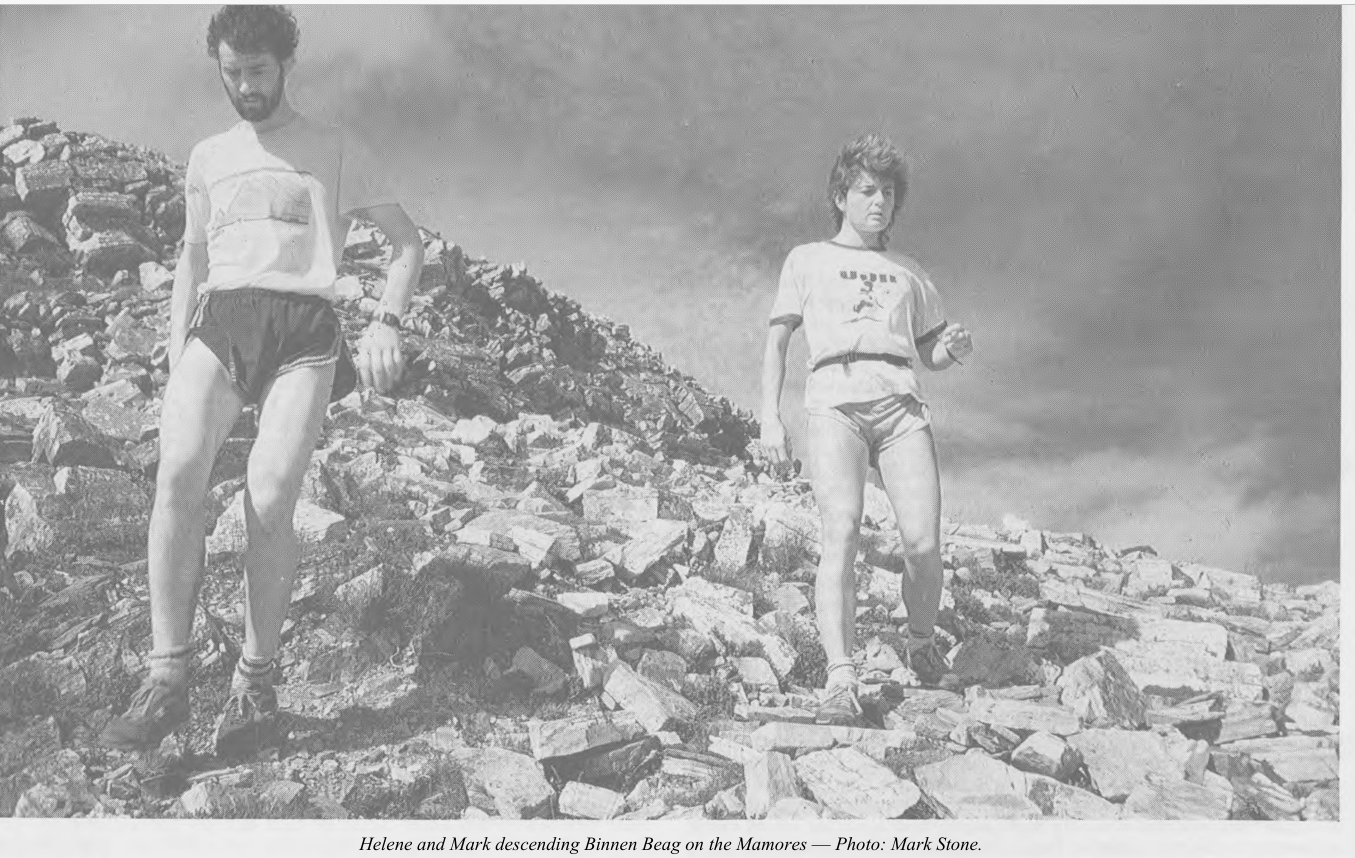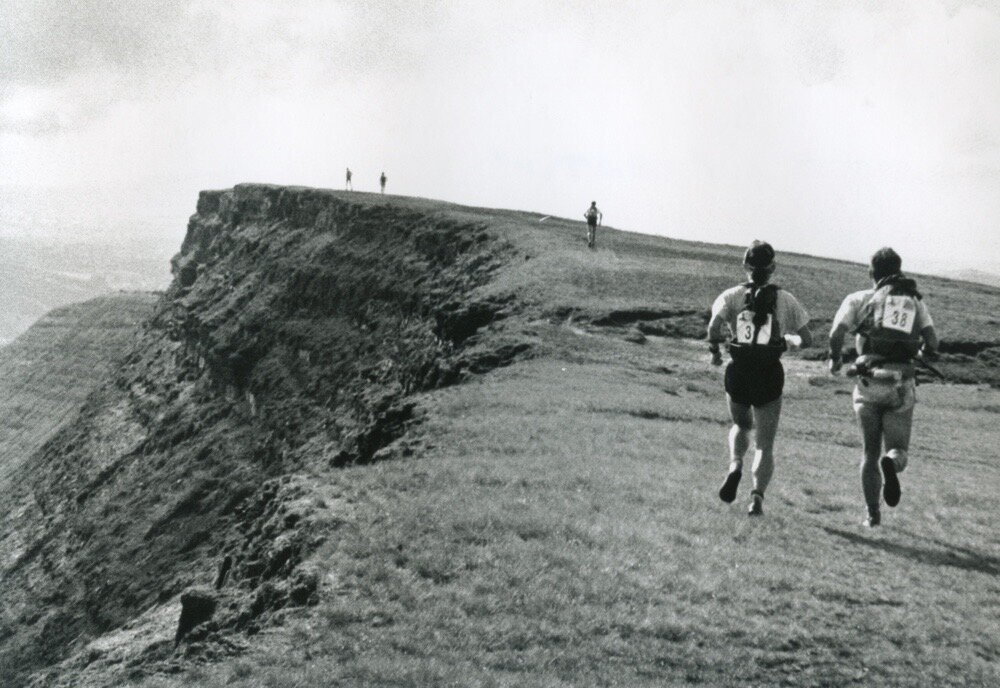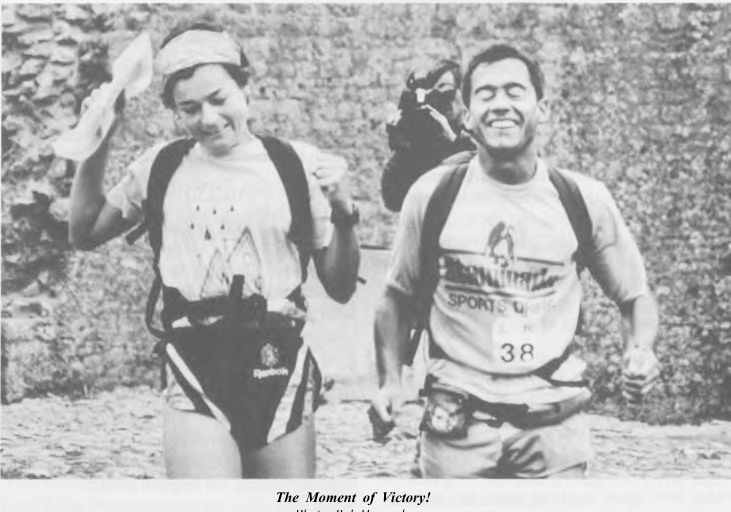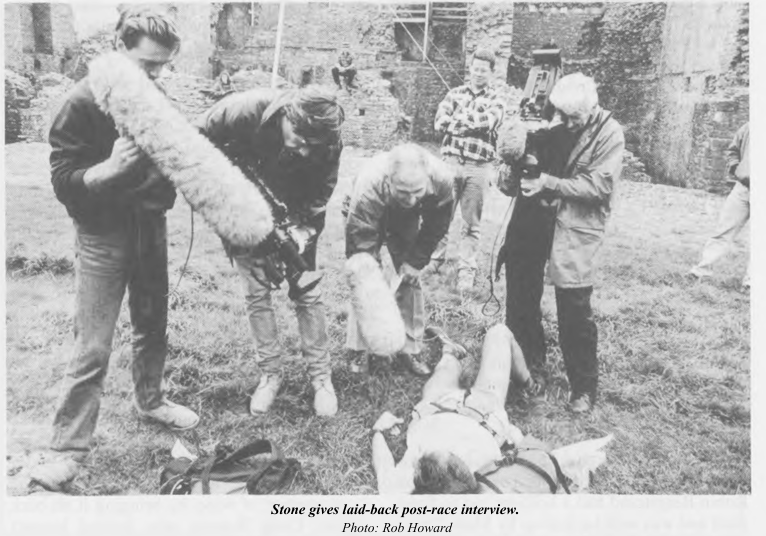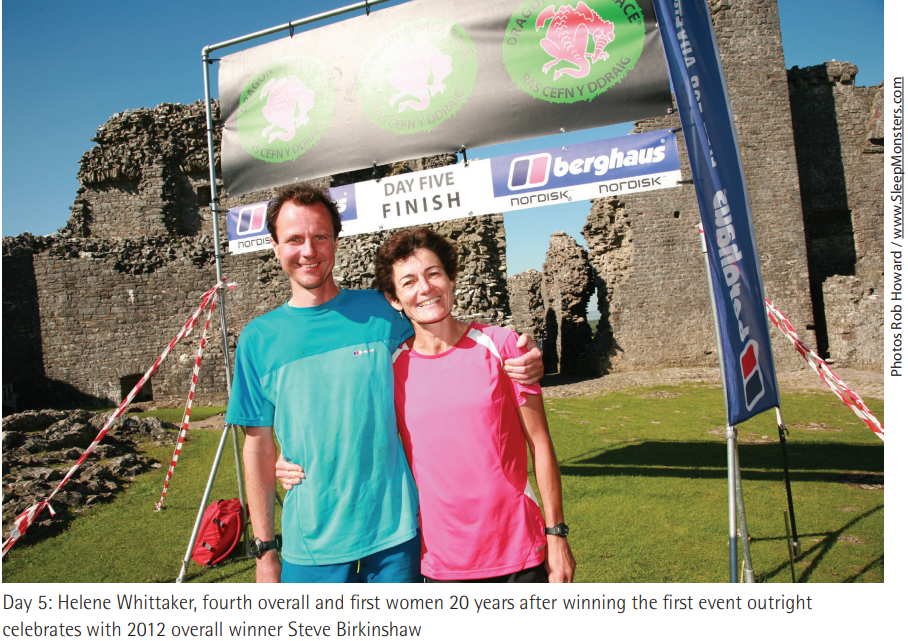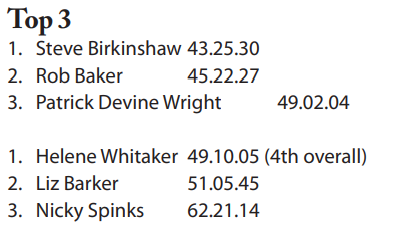The Dragon’s Back race in Wales was first run in 1992 and Helen was there. Not just there but performing one of her her ever feats on the mountains. One of the fiercest challenges in hill and mountain running she won it not once, but twice. She won the inaugural pairs category with Martin Stone, and then following a 20 year gap when the race was not run at all, she won the Ladies race. She had already done a few 2-day mountain marathons with Martin before this but the did not run as a team after this one. We have some photographs of the terrain covered at this link : they come from the race website which is a magnificent coverage of the race from 1992 to date with times, splits, places and photographs of every race and more.
after this one. We have some photographs of the terrain covered at this link : they come from the race website which is a magnificent coverage of the race from 1992 to date with times, splits, places and photographs of every race and more.
The iconic photo of Martin Stone and Helene Whitaker (nee Diamantides) running on Fan Brycheiniog on the final day of the Dragon’s Back Race 1992 ©Rob Howard
The event itself was described in 2024 as follows:
“Staged only eight times, the Dragon’s Back Race has acquired near mythical status in the adventure racing and running community. The event was first held in 1992. Already regarded as the world’s toughest mountain race, the Dragon’s Back Race was extended from five to six days in 2021, increasing the distamce covered from 315 to 380 kn, and height climbed from 15,500 to 17,400m. Partyicipants start at Conwy Castle and then embark on an incredible journer down the whole spine of Wales finishing in the grounds of Cardiff Castle.”
The ‘Trail Running Scotland” website tells us that “It is a race with a place in the history of British mountain running and first completed in 1992. It was won by the pair of Martin Stone and Helene Diamantides. The event was so extreme and so audacious that it was filmed for the BBC. Despite the success of this race, it was 20 years until the second running of the event, resurrected by Shane Ouhly of Ourea Events. Remarkably the female winner of the event was again Helene Diamantides (now Whitaker)”.
The picture above was taken from Helene’s article in The Fellrunner of February 1993. Any doubts about the severity of the race should now be dispersed. Helene was very fit indeed at the start of the race havung set records for the Lairig Ghru and the Langdale Horseshoe race and in the actual race Martin and Helene won the event by a total of 33 minutes with the splits of the top three teams being –
Note how close the times of the top two finishing teams were on the first day (2 minutes) and compare that with the difference on the last day (37 minutes). Further, the winner of the solos category was times at 42:59.
In 1992 the race ‘only’ lasted for five days and in the article noted above she describes the race in some detail and ends with Guidelines for success in the race. These are very specific and include
- Prepare for it and train, train, train; 2. Day One and (days two to five) eat a lot early on; 3. Don’t win the first day (interesting and her reasons for this need to be read in the article); 4. Day Two: breakfast is essential; 5. Days three and four: Don’t assume the valleys are the easy bits; 6. Day five: This is the longest and toughest underfoot; 7. At the finish, Smile, even if you don’t feel like it!
The smiles are evident in the picture above. The photograph below, from the same article, was just after that.
Helene has several videos dealing with the challenge with one posted on Youtube three years ago describing her training for the ’92 race before talking about heading back 20 years later, and it is one that you really should see.
The race was not held again until 2012, and then again in ’15. ’17, ’19, ’21, ’22, ’23, ’24 and looks set to go on for some time yet. When it started up again in 2012. Helene was there on the start line again, running as an individual this time. There were 73 starters, men and women, and her overall finishing position was fourth in 49:10:05, with next Lady being Liz Barker in ninth in 51:32:59. It was a quite amazing performance for one in the W45 category – the first M45 was back in tenth place 53:17:01, and the second W45 was seventeenth in 62:17:21. This performace really did cause a stir in the hill and mountain running community. But why did she decide to race it the second time around? She is quoted in the race website as follows. “I don’t have the selfish luxury of hours and hours roaming the hills. Nor do I want to anymore. My old joints certainly wouldn’t thank me for it either if I tried to. It was my husband who encouraged me to enter, as I don’t think it would be fair to the family to commit the time and effort required to have half a chance of making it to the start line, let alone the finish line. I’ve had to concentrate on trying to get fit enough to train for the DB without something breaking: being old and female has major consequences for strength and cardiovascular fitness, Trying to be efficient focuses the mind wonderfully on what needs to be done, not what you would like to do!”
There is a very good report on the race in The Fellrunner of Spring 2013 which is available on the net at
https://www.fellrunner.org.uk/documents/fellrunner/2013_spring.pdf
Helene was 12 minutes behind the leading lady, Nicky Spinks, at the end of the first day, she had a storming second day to be first lady and third overall, third day and she was still in the lead and fourth overall, by the end of the fourth day she was still first lady and fourth overall with Liz Barker second and Nicky Spinks third, and at the finish of the race she was still fourth overall but first Lady. Result –
Although Helene had completed many fine races, challenges and tests of endurance, her two Dragons Back races must be among the very best.
